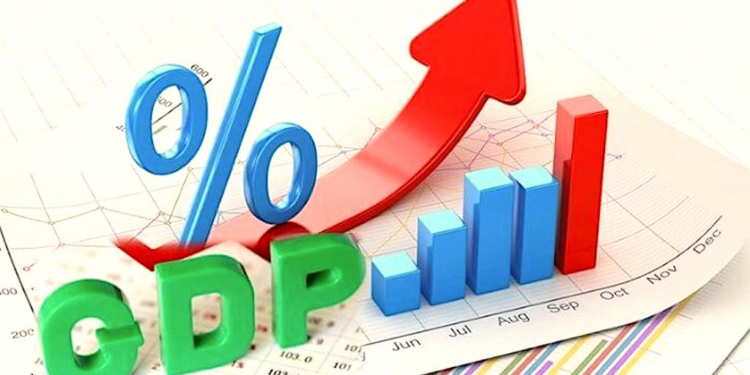Nigeria’s Gross Domestic Product (GDP) growth rate in real terms was down by 2.51 per cent in the second quarter (Q2) of 2023 on a year-on-year basis, which is 1.03 per cent percentage points lower than the 3.54 per cent recorded in Q2 2022.
It is however higher by 0.20 per cent percentage points relative to 2.31 per cent recorded in the first quarter (Q1) of 2023, according to the latest data released by the National Bureau of Statistics (NBS).
Nigeria’s unabating insecurity situation that has affected supply side of the economy and capital flight over the 2023 general election uncertainties, the Russia/Ukraine war and the increasing cost of production all combined to turn the curve southward.
The major driver of the economy between Q1 and Q2 is the services sector which recorded a growth of 4.42% per cent and contributed 58.42 per cent to the aggregate GDP.
On a quarter-on-quarter, the real GDP growth decreased by 0.17 per cent in Q2 2023, reflecting a lower production level than the preceding quarter of Q1 2023.
The economic activity in real terms for Q2 2023 stood at N17,719,335.38 million, which is lower than the rates recorded in Q1 2023 N17,750,060.97 million but higher than Q2 2022 which stood at N17,285,882.91 million.
“This highlighted the shortfall in production level in the quarter under review when compared with the previous quarters of Q1 2023 but higher than the corresponding quarter of Q2 2022,” statistician-general of the federation Adeniyi Adeniran said.
In nominal terms (current price), aggregate GDP stood at N52,103,927.13 million in Q2 2023, indicating a year-on-year nominal growth rate of 15.77 per cent. This is higher than the value of N45,004,520.89 million in Q2 2022 and N51,242,151.21 million in the preceding quarter.
According to the NBS, the major contributing economic activities in real terms in the quarter under review (i.e., Q2 2023) are Crop Production 20.66 per cent, Trade 16.80 cent, Telecommunication 16.06%, Crude petroleum 5.34%, and Real Estate 5.29 per cent.
The agricultural sector grew by 1.50 per cent in Q2 2023 in real terms, which is higher than Q2 2022 which recorded 1.20 per cent. The industry grew by -1.94 per cent in Q2 2023, which shows an improvement when compared to the figure recorded in Q2 2022 which was -2.30 per cent, while the services sector grew by 4.42 per cent but less than 6.70 per cent recorded in Q2 2022. Agriculture contributed 23.01 per. cent, Industry 18.56 per cent, and Services 58.42 per cent.
The oil sector GDP grew by -13.43 per cent in Q2 2023, which shows a decline when compared to -11.77 per cent in Q2 2022 and the previous quarter of Q1 2023 which recorded -4.21 per cent. Similarly, the oil sector accounted for 5.34 per cent during the quarter under review.
The sector recorded an average daily oil production of 1.22 million barrels per day (mbpd) in Q2, lower than the daily average production of 1.43 Mbps and 1Mbpsmbpd recorded in the same quarter of 2022 and the Q1 2023 by 0.22 mbpd and 0.29 mbpd, respectively.
The non-oil sector contributed 94.66 per cent to the GDP in Q2 of 2023 in real terms. This shows an increase on a year-on-year basis when compared to the same period in Q2 2022 which stood at 93.67 per cent. This is also higher than Q1 2023 which recorded 93.79 per cent.
Mr Adeniran attributed the economic performance of the non-oil sector in Q2 2023 to the growth recorded in some economic activities, like crop production in the agriculture sector, trade, telecommunication, real estate in the services sector, and crude petroleum in the mining and quarrying sector.



